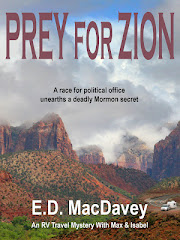Dunes of Tecolote Beacch, a bit E of the camping area--
looking N to Espiritu Santu Is.
.The beach is at the end of the paved road, about la 30 minute drive north from La Paz. Simply drive north along the Malecon, and it turns into the road to several beaches, including Tecolote. The beach is about a mile long, facing Isla Espiritu Santu, which is separated from the mainland by about 3.5 miles.
There are three restaurants/bars on the beach; you can also hire a panga to the island, and rent other kinds of gear. It’s probable you can also rent horses, ATVs, and a possibly a jet-ski. The smallest restaurant, to the east, opens late and closes early, because the owners live in La Paz.
Camping is free and unregulated. There are barrels for garbage (though I recommend you use barrels in La Paz). The Mexicans have a volunteer clean-up twice a year, so the litter problem has improved much previous years. But there is still an immense amount of litter behind the beach in places. I’d recommend that every camper spend 15 min a day with a bag, helping to reduce the litter. Together, in a few years, we can improve the situation—plus encourage the Mexican volunteers.
There are sun shades for people along the beach. There are no rest rooms for campers—people use their RVs or walk back into the desert (which is overused—paper does not break down). There is no public water at the beach, but you can fill your RV at any Pemex station in La Paz. That water is reputed to be safe and chlorinated. But if you want really pure water, you can drive to a place where they sell very pure reverse osmosis water—for 8 pesos per 5 gallons.
You can park an RV either to the E or W from the restaurants. I chose the E, where there is more room, and less beach recreation. Today, there are 7 RVs parked over a half mile to the E—but last weekend there may have been three times that number. Still, it’s not crowded. You can drive close to the water in many areas without fear of getting stuck, because some time ago, oil was spread on the sand, converting it to semi-pavement.
The beach is very windy, mostly from the north or from the south. It can suddenly start, or switch directions, within minutes. Whenever you leave your campsite, you have to secure everything. The experienced campers here have skirts they tuck around their trailer—both to discourage theft, secure gear against the wind, and to reduce rocking of the trailer.
The beach attracts a community of mostly Canadians with a scattering of Germans. Americans used to come here, but hype about violence in Mexico has scared them away. Some of the Canadians have been coming here for years—they know and socialize with Mexicans from La Paz.
The beach is quite safe for camping. The Canadians report that there was a period of petty theft of things left outside trailers at night—but now theft is uncommon. I have left low-value items outside at night, and nothing has disappeared. I have two kayaks--one locked to the top of my car with a bike cable, and another unlocked on the ground next to my trailer. Neither disappeared. The Canadians watch out for other campers—one even has an alarm he would sound if he saw anything suspicious. In fact, when I landed my kayak in the dark after a paddle at night, the nearest camper came out of his trailer and shined a flashlight on me.
Activities
Hiking and mountain biking:
Further to the east are several houses, a ranch, and a hotel or condo development which blends fairly well with the desert. The development has a reverse osmosis plant tastefully disguised as an old mission. So there is a network of dirt roads you can hike or ride mountain bikes on. There are very rugged low mountains to the south—but no trails are visible.
When the slopes are modest, the footing is firm and walking through the desert is easy. But once the slope becomes steep, the footing is extremely unstable.
In summary, Playa Tecolote is an excellent place to camp because it is safe, scenic, and has ready access to both La Paz and to a number of interesting beaches, plus the Island. On the negative side, this is not a secluded beach, nor a sheltered nook. The scale of beach, sea, and mountains is so vast that it’s almost intimidating. And, it’s very windy.
Photos of Tecolote beach and area here.









No comments:
Post a Comment
Comments are always welcome.